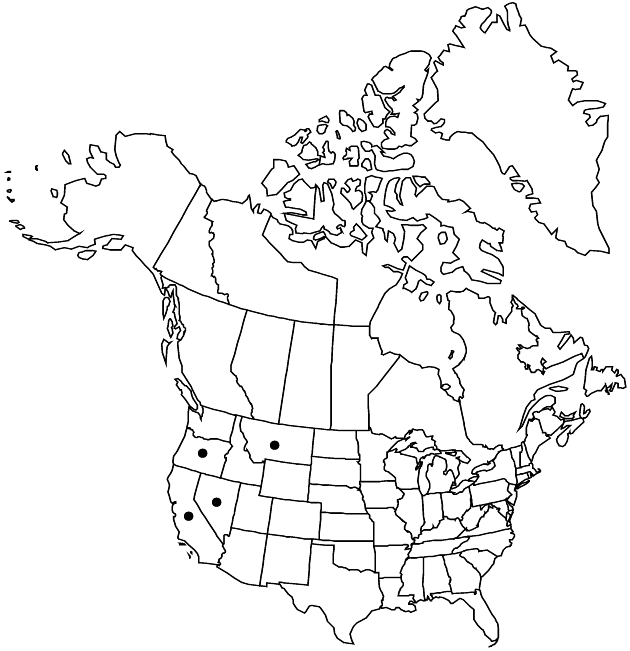Crepis modocensis subsp. subacaulis
Publ. Carnegie Inst. Wash. 504: 148. 1938.
Basionym: Crepis occidentalis var. subacaulis Kellogg Proc. Calif. Acad. Sci. 5: 50. 1873
Revision as of 19:18, 16 December 2019 by FNA>Volume Importer
Plants 6–30 cm; setae yellowish, usually ± straight, sometimes bent (ca. 1 mm). Stems (stout, branched proximally) setose (setae yellowish). Leaves: petioles setose; blades 10–15 × 3–4 cm (margins pinnately lobed, lobes dentate). Heads 1–6. Involucres 13–21 mm. Phyllaries sparsely setose (setae blackish) or glabrous. Cypselae blackish to brownish or dark reddish, slightly narrowed, not beaked (ribs strong); pappi 9–13 mm.
Phenology: Flowering May–Jul.
Habitat: Wet meadows, steep slopes
Elevation: 1800–2100 m
Distribution

Calif., Mont., Nev., Oreg.
Discussion
Selected References
None.
Lower Taxa
None.